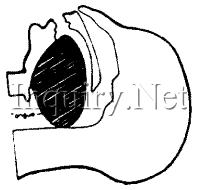Artificial Respiration
Respiratory failure is a critical concern for a first aider. If the person is not breathing, then problems such as bleeding, broken bones, burns, scalds, and shock are secondary issues.
Given the amount of time your group will spend in the wilds either hiking or camping, it is reasonable and prudent to expect all members of your Patrol and Troop to be proficient in artificial respiration.
There are many different techniques for giving artificial respiration. The most widely taught and accepted technique goes by a variety of names, such as "mouth to mouth", "rescue breathing", and "direct". Using this technique, air is expelled from the rescuers lungs directly into the victim's mouth. Assuming a tight air seal, the air is forced into the victim's lungs, and the rescuer watches to see the victim's chest rise with each breath. This technique is direct, and the effectiveness can be visually measured by the rescuer. If the chest of the victim does not rise, then the mouth and throat should be checked for obstructions before rescue breathing is continued.

The head, before being tipped back,
showing the tongue obstructing the airway

To perform rescue breathing perform the following steps:
- Check the mouth for obstructions, lift the neck and tilt the head back.
- Pinch the nostrils and seal the mouth, and exhale directly into the victim's mouth.
- Release the nostrils and the seal around the mouth.
- Watch for the victim's chest to rise by itself.
- Feel for a pulse on the victim's neck.
- If the victim's chest does not start to rise on its own, repeat this process from number 1, until professional help arrives.
Rescue breathing should continue at a normal breathing pace of about 12 times per minute, until the victim is fully able to breath on his or her own. Even if the victim appears able to breath on their own, be sure to keep a close watch since relapses are common.